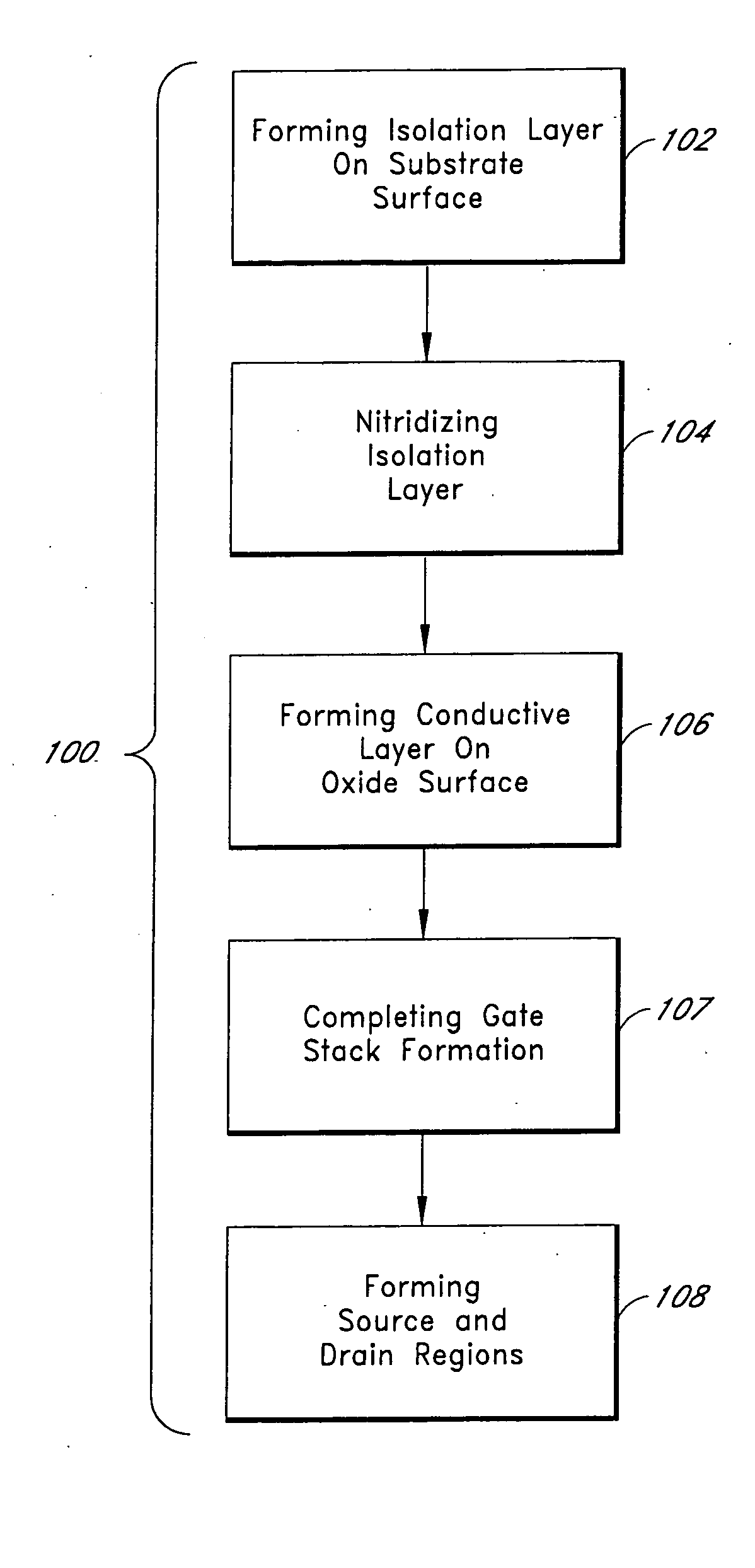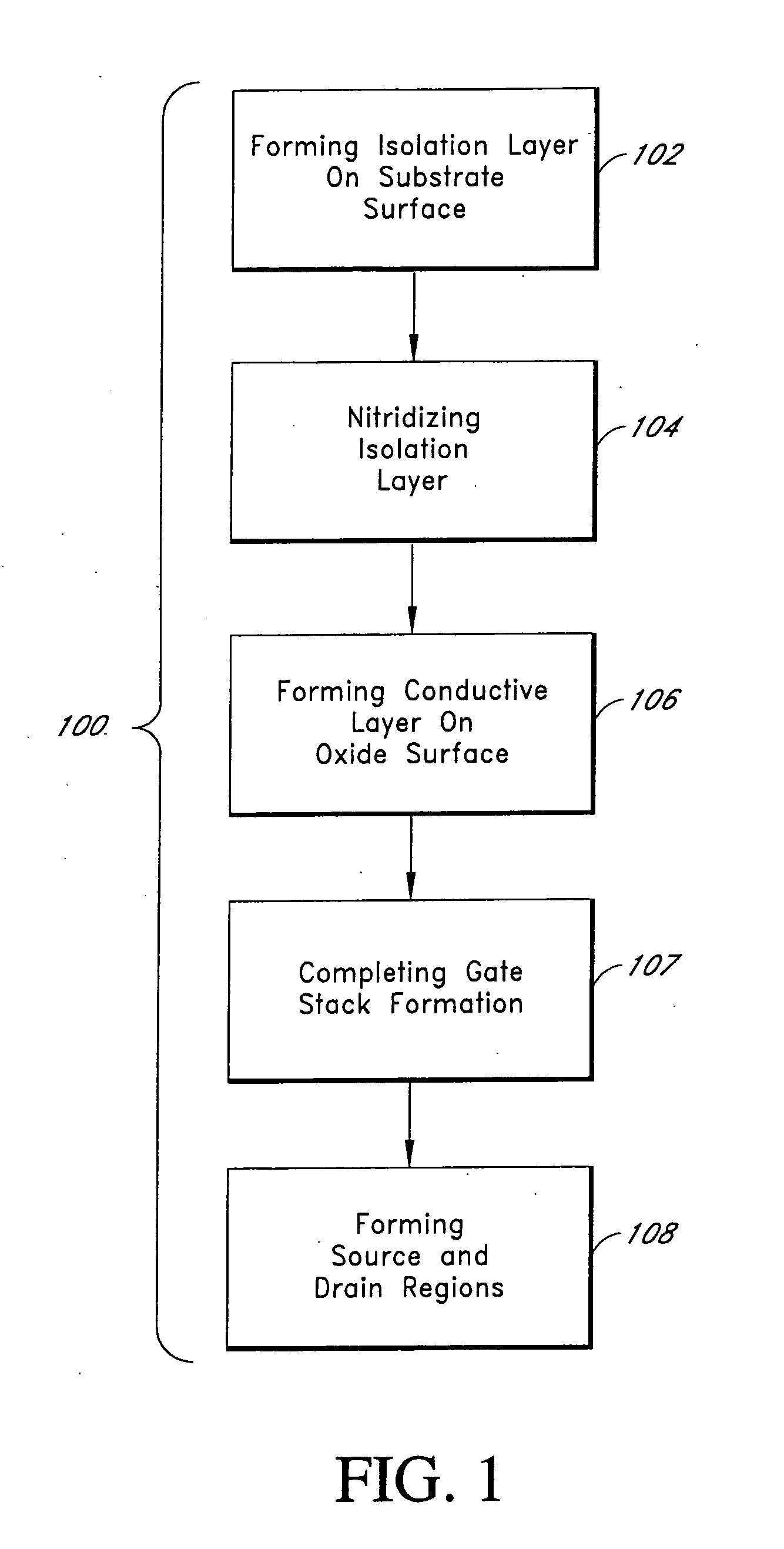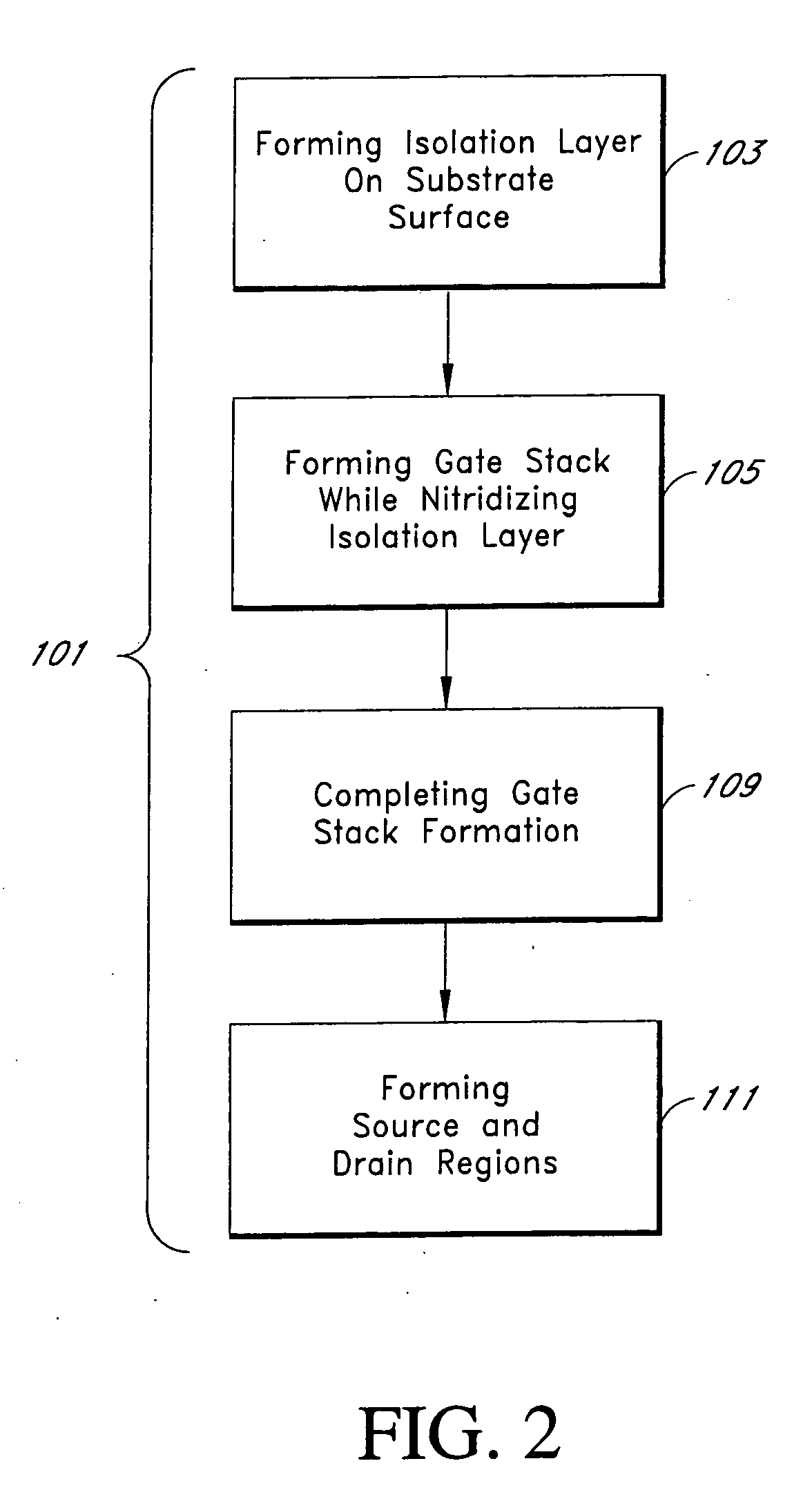Plasma nitridization for adjusting transistor threshold voltage
a technology of transistor threshold voltage and plasma nitridization, which is applied in the field of integrated circuit processing, can solve the problems of increasing the threshold voltage, reducing the device dimensions known to decrease the threshold voltage, and undesirable devices with a low threshold voltage, so as to increase the current leakage, convenient operation, and cost-effective
- Summary
- Abstract
- Description
- Claims
- Application Information
AI Technical Summary
Benefits of technology
Problems solved by technology
Method used
Image
Examples
Embodiment Construction
[0026] Reference will now be made to the drawings wherein like numerals refer to like parts throughout. As will be described herein below, the process of the preferred embodiments provides a method of adjusting the transistor threshold voltage by incorporating nitride to the gate oxide layer of the transistor so as to inhibit the mobility of charge carriers in the oxide and thereby increase the threshold voltage required to activate the transistor. As will also be described herein below, the method has also shown to improve gate hardening as well as raising the dielectric constant of the isolation layer, which allows the use of a thinner dielectric layer in semiconductor devices.
[0027]FIG. 1 schematically illustrates a process flow 100 of the preferred embodiment of adjusting the threshold voltage of a transistor using a plasma nitridization process. As shown in FIG. 1, the process begins with a first step 102 comprising the formation of an isolation layer onto a substrate surface....
PUM
 Login to View More
Login to View More Abstract
Description
Claims
Application Information
 Login to View More
Login to View More - R&D
- Intellectual Property
- Life Sciences
- Materials
- Tech Scout
- Unparalleled Data Quality
- Higher Quality Content
- 60% Fewer Hallucinations
Browse by: Latest US Patents, China's latest patents, Technical Efficacy Thesaurus, Application Domain, Technology Topic, Popular Technical Reports.
© 2025 PatSnap. All rights reserved.Legal|Privacy policy|Modern Slavery Act Transparency Statement|Sitemap|About US| Contact US: help@patsnap.com



